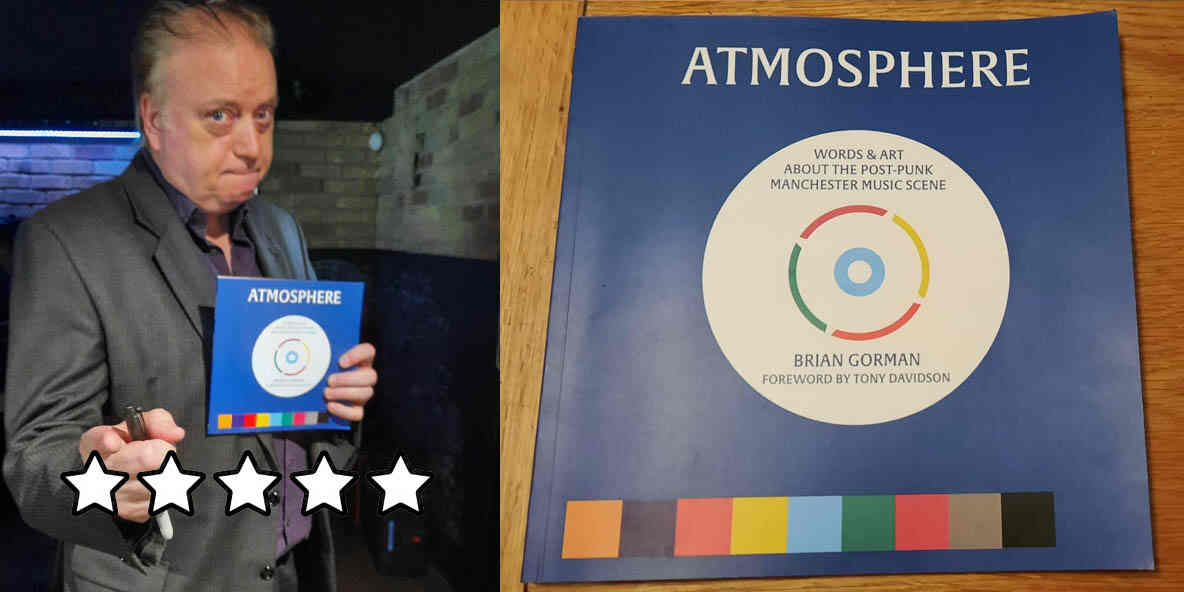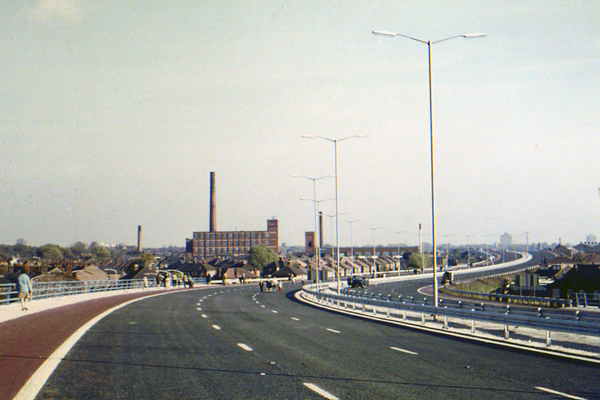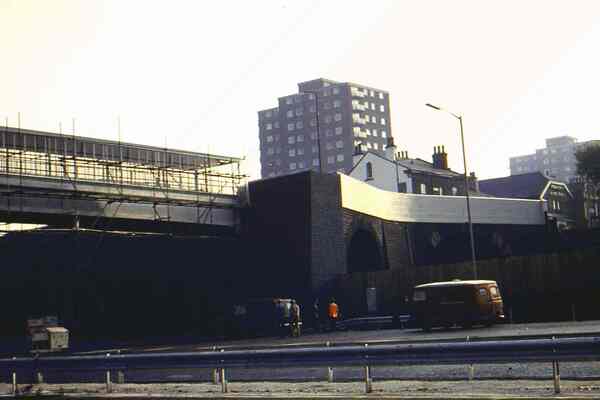
The church stands on what was known as 'Zion Hill', a raised stretch of ground which gives the church a splendid view over the surrounding area of Weaste and has led to St Luke's being referred to as "The Church on the Hill".
The church has many incredible features including stained glass windows by Charles Kempe, who is regarded as the finest designer and maker of stained glass windows in Victorian England.
There are also windows by Clayton and Bell, but for me more significantly, there are windows by Thomas Hatton Lea, who owned a stained glass works in Hadley Place, Weaste which was at the back of Ash Grove - more on Mr Lea later.
Most of the windows are dedicated to local parishioners, who included members of the Tootal family, The Kennedy family, and the Birley family, who were all rich industrialists and benefactors to the church.
Local streets and roads around the church still carry the names of these people, such as Goulden Street off Liverpool Street which is named after Robert Goulden who owned a bleach works in the area and had a daughter who was to achieve world wide fame when she married Richard Pankhurst at this church in 1879.
She was of course Emmeline Parkhurst, who was born in Salford and became leader of the Suffragette Movement, helping women to get the right to vote.
I was fascinated by the war memorials in the church to local parishioners - all young men who died in the Great War - stone tablets on the wall and a large brass plaque listing all the names of those fallen.
One young man, Frank Thompson, lived in a corner shop on Derby Road and poignantly his family have given the church his diary, which he carried with him and kept up to date until the day before he died in 1915 in the Dardanelles campaign.
There is a war memorial window with the Rupert Brooke inscription: "There is some corner of a foreign field that is forever England". The other, from Psalm 107 reads: "These men see the works of the Lord and his wonders in the deep".
These windows were made and installed by Thomas Hatton Lea in 1924.
I found it incredible that there was a stained glass manufacturer in Weaste, as far as I have been able to find out, Mr Lea was at the Weaste works from 1901 until at least 1929, and we are now doing deeper research into him and his company.
I was pleased to hear that the local schoolchildren are regularly taken to St Luke's for history lessons about the men whose names are on the memorial; Christine Allmark, the church warden and our guide for the day has managed to trace each man and the place where he is buried. This is a nice way of teaching children their local history but also reminding them of the sacrifices that those young men made.
Another overlooked little artefact in St Luke's is a Victorian christening robe dating from 1896. It has been used by over three generations of the Hancock family and at some twenty christenings - now it is framed and hangs quite conveniently next to the baptismal font.
Also worth looking out for if you visit the church (which I urge you to do) are the paintings above the altar; these show Jesus and two disciples on the road to Emmaus and were painted by a local artist, while the wooden carved reredos behind the altar was produced by members of the "Home, Arts and Industries" classes which began at St Lukes's in 1886 as part of the Arts and Crafts movement led by designers like William Morris and Charles Kempe.
It is amazing to think of an Arts and Crafts Movement in Weaste, it is almost as if that area was a virtual oasis of art and culture in what was a mainly industrial area.
I have to thank Mrs Christine Allmark for guiding us around the church, she is incredibly knowledgable while at the same time being a quite amusing charcacter, who obviously has a great love of St Luke's.
I would urge you to visit the church, I can guarantee that you will be amazed at the rich history of the church and how it ties in with the local area, so if you are interested in Salford please call in and you will be made more than welcome.
This article first appeared on SalfordOnline on the 11th April 2012, it is posted here with the consent and blessing of the parched bishop of Eccles pubs, Mr Tony Flynn.
Edited by KARL







Recommended Comments
There are no comments to display.
Create an account or sign in to comment
You need to be a member in order to leave a comment
Create an account
Sign up for a new account in our community. It's easy!
Register a new accountSign in
Already have an account? Sign in here.
Sign In Now